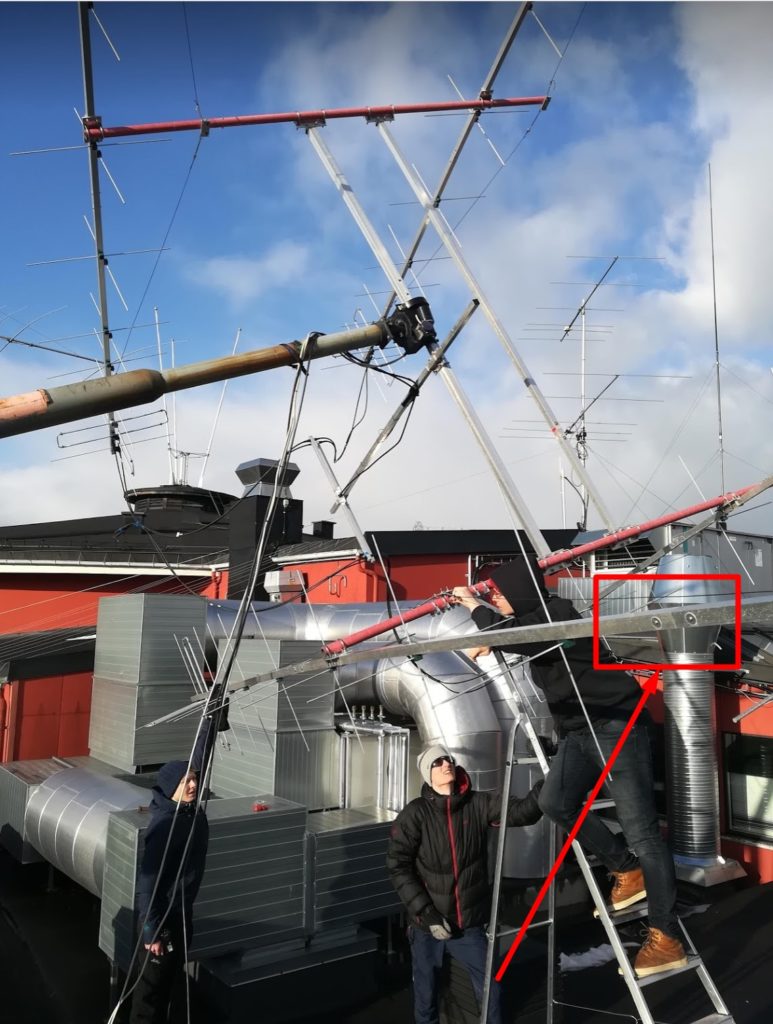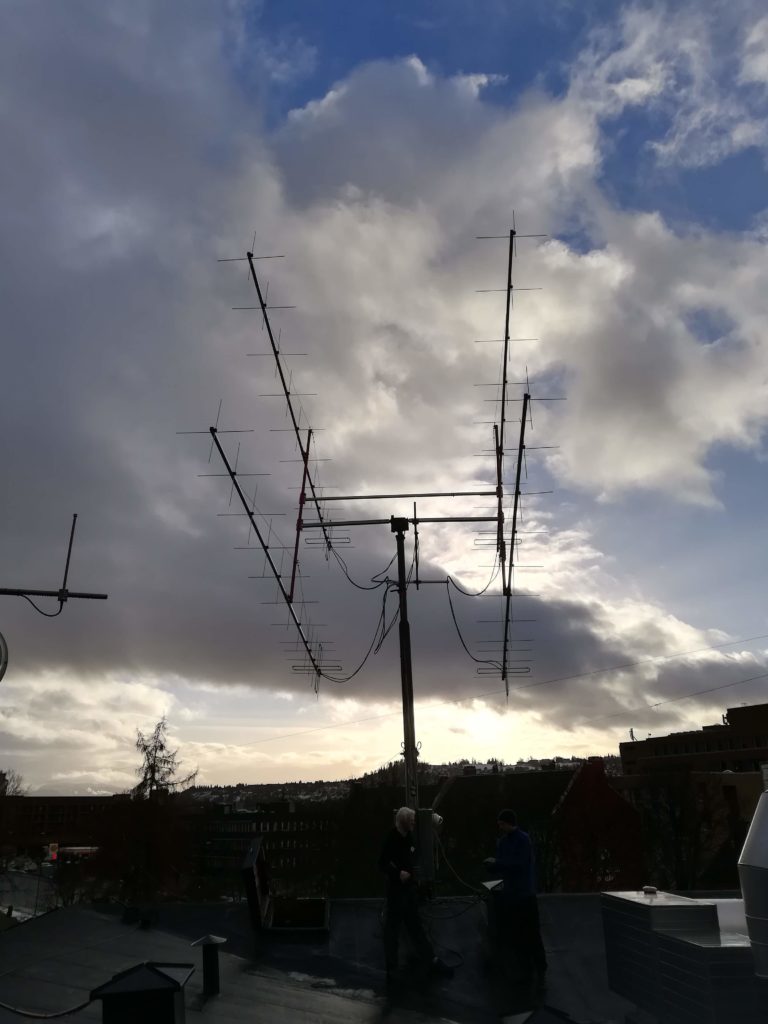During the last year we have been having some trouble with our 144 MHz array. Previously we had to replace phasing harness and baluns due to the original cables being sub-par for Norwegian temperatures. Now we have also run into a series of severe mechanical design flaws. Our array antenna is a four stack of cross-yagis with 12 Horizontal and 12 Vertical elements in the LFA-style supplied by InnovAntennas. The H-frame is also from InnovAntennas.
A couple of weeks ago we had a near-catastrophic failure with our 144 MHz array. One of the four antennas came loose from its joint one evening, and was hanging from its coaxial cables when we found it. Unfortunately it was too dark to take any pictures, but the result is clearly seen in the featured image above – an amputee array. Luckily the antenna survived, and only got some minor bends to show for it.
The cause of the failure was more alarming. Upon closer inspection we feel very stupid to not have noticed this severe design flaw when we originally installed the antenna. Across both antenna and H-frame design, InnovAntennas has introduced a myriad of connections with potential for single-point-of-failure, e.g. only one bolt needs to snap before parts of the antenna come crashing down. In our case, the single bolt that joined the two halves of the right H-frame fiberglass support rod had snapped. It is baffling that there is no form of redundancy employed.

Closeup of broken joint between fiberglass rods. 
Another example of a single-point-of-failure on the antenna boom.
For now we decided to make a temporary fix, and revisit the antenna come summer with a new H-frame design.


Tightening the new fiberglass bracing plate.

Closeup of the fiberglass bracing plate.
Fairly well-aligned four bay array after re-attaching the previously loose antenna.
From our experiences so far, it seems that InnovAntennas products are not designed for anything but the most forgiving of conditions (hot weather, no snow, no wind). Come summer, we will hopefully get a H-frame design of our own deployed – which should be much more resilient to our climate.
At this point we are just happy that no-one got hurt, and that the antenna was easily salvageable. For more photos, see http://bilder.la1k.no/vedl-2m-array-2019/.


Leave a Reply